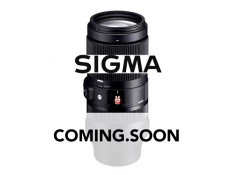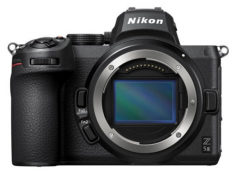HEIF vs JPEG: Which Is Better Format For Photograph?
Wednesday 29 May 2024
 11.2k
11.2k
 Reproduction without the author's authorization is prohibited
Reproduction without the author's authorization is prohibited
What is HEIF and how is it different from jpeg? How are they different from RAW? Are these image compression formats quietly affecting your photos?
If you are using a Canon camera or an iphone, you may see the HEIF format. Simply put, this HEIF format is better than the jpeg format. But HEIF also has its drawbacks, let's continue to look at them.
What is HEIF?
HEIF = Higher Quality at Smaller Size. HEIF uses more advanced compression techniques (based on the HEVC/H.265 video compression standard) than JPEG, allowing it to produce higher quality images at smaller file sizes. HEIF supports higher color depths (up to 16 bits per channel), which means it can store a wider range of colors and more precise color information.
What is JPEG?
JPEG is a lossy format that compresses images by discarding some data. It offers good quality, but the file sizes are generally larger compared to HEIF for the same level of quality. JPEG typically supports 8 bits per channel, which limits the color range and precision compared to HEIF.
File Size
HEIF:
More Efficient Compression: Due to its advanced compression algorithms, HEIF files are typically much smaller than JPEG files for the same or better quality.
Storage Efficiency: This efficiency can be particularly beneficial for devices with limited storage capacity.
JPEG:
Less Efficient Compression: JPEG files are larger than HEIF files for the same level of image quality, meaning they take up more storage space.
Compatibility
HEIF:
Limited Compatibility: HEIF is a relatively new format and is not as widely supported as JPEG. While it's supported by newer versions of iOS, macOS, and some Android devices, it may not be compatible with older software, web browsers, or devices.
Software Support: Editing and viewing HEIF images might require specific software or updates.
JPEG:
Universal Compatibility: JPEG is universally supported across almost all devices, operating systems, and web browsers. It is the de facto standard for images on the web and in many applications.
Wide Software Support: Nearly all image editing software and tools support JPEG, making it highly convenient for various uses.
Additional Features
HEIF:
Advanced Features: HEIF supports features like transparency (similar to PNG), multiple images in a single file (ideal for bursts or live photos), and better metadata storage.
Efficient Animations: HEIF can also store animations efficiently, similar to how GIF works but with better compression and quality.
JPEG:
Basic Features: JPEG is primarily designed for static images and doesn't support features like transparency or multiple images in a single file.
Simplicity: The simplicity of JPEG can be an advantage for straightforward photography needs without the need for advanced features.
Conclusion
HEIF is better for:
Users who prioritize image quality and file size efficiency.
Those who use modern devices and software that support HEIF.
Photographers needing advanced features like better color depth and multiple images in a single file.
JPEG is better for:
Users who need broad compatibility and simplicity.
Those who require images to be shared and viewed across various platforms and devices without compatibility issues.
Situations where advanced features of HEIF are not necessary.
Statement: all contents and remarks made by K&F CONCEPT 's intranet friends only represent themselves and do not reflect any K&F CONCEPT 's opinions and views.
-
 Sigma is about to release 200mm F1.8Thursday 03 April 2025
Sigma is about to release 200mm F1.8Thursday 03 April 2025 -
 Sigma may release a new l mount zoom lensTuesday 01 April 2025
Sigma may release a new l mount zoom lensTuesday 01 April 2025 -
 Fujifilm may launch a new XF23mm pancake lensFriday 28 March 2025
Fujifilm may launch a new XF23mm pancake lensFriday 28 March 2025 -
 Nikon Z5ii will be released on April 3Friday 28 March 2025
Nikon Z5ii will be released on April 3Friday 28 March 2025 -
 Nikon Z5ii will be officially released next weekWednesday 26 March 2025
Nikon Z5ii will be officially released next weekWednesday 26 March 2025








